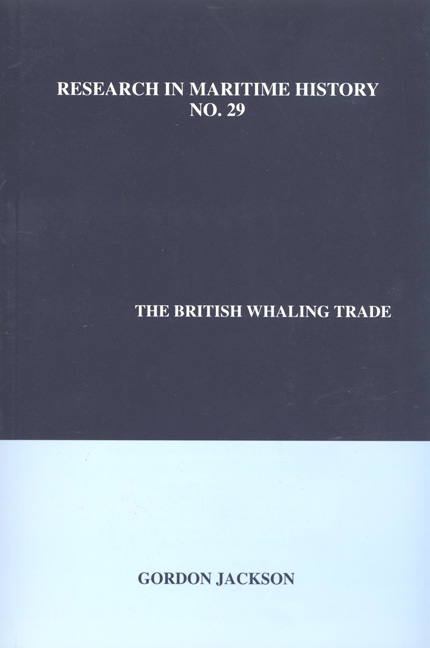Book contents
- Frontmatter
- Dedication
- Contents
- List of Tables in the Text
- List of Appendices
- New Introduction
- Preface
- Part One The Traditional Whaling Trades, 1604-1914
- Part Two The Modern Whaling Trade, 1904-1963
- Chapter 9 New Whaling Techniques
- Chapter 10 New Whaling Areas
- Chapter 11 Advances in Oil Technology
- Chapter 12 Expanding Fleets and the New Fishing Grounds, 1919-1920
- Chapter 13 Crisis and Contraction, 1929-1932
- Chapter 14 Regulated Recklessness, 1932-1939
- Chapter 15 The Final Fling, 1945-1963
- Conclusion
- Appendices
- Select Bibliography
- Additional Bibliography
- Index
Chapter 10 - New Whaling Areas
from Part Two - The Modern Whaling Trade, 1904-1963
- Frontmatter
- Dedication
- Contents
- List of Tables in the Text
- List of Appendices
- New Introduction
- Preface
- Part One The Traditional Whaling Trades, 1604-1914
- Part Two The Modern Whaling Trade, 1904-1963
- Chapter 9 New Whaling Techniques
- Chapter 10 New Whaling Areas
- Chapter 11 Advances in Oil Technology
- Chapter 12 Expanding Fleets and the New Fishing Grounds, 1919-1920
- Chapter 13 Crisis and Contraction, 1929-1932
- Chapter 14 Regulated Recklessness, 1932-1939
- Chapter 15 The Final Fling, 1945-1963
- Conclusion
- Appendices
- Select Bibliography
- Additional Bibliography
- Index
Summary
By 1909 it was evident that no significant increase was to be expected in the output of the European whaling stations, which were already past their prime; and in their search for more oil the Norwegians spread outwards beyond the Hebrides towards the bay stations of the old Southern Fishery, along the coast of South Africa and Australia. The steam whale-catchers that chased rorquals in European waters could chase them equally well in other areas where they had remained unmolested during the vast slaughter of Right and sperm whales. Above all, they could move with relative ease in the colder waters of the Antarctic where the greatest concentrations of rorquals were to be found. For all their daring, the Southern whalers had made no impression whatever on the whale stocks in this area, chiefly because the climate was poor and land bases were too isolated for old-fashioned pelagic whaling.
Although a new phase of southern whaling was technically possible in the areas of habitation, there were formidable obstacles that deterred most companies from considering fishing in Antarctic waters, and left them watching each other to see who would make the first move and the first losses. The greatest problem was distance. Whale-catchers had no room for try-works and could not possibly carry either blubber or oil. They could not even carry enough coal to get themselves down to the Antarctic, let alone for a round trip and a fishing expedition. The whole point of the catchers was that they were tied to a land base, but there was no inhabited territory - and some people thought no inhabitable territory - where the whales congregated in the cold waters in which the greatest concentration of krill was to be found. Since there was neither food nor fuel there, whaling expeditions in the Antarctic called for a huge transport operation involving both supplies and oil. Above all, there must be a very substantial base capable of working up the whales, catering for the men, and servicing the catchers.
In simple human terms there was the formidable task of attracting labour to the cold and dreary isolation of the deep south. This was quite a different proposition from persuading
- Type
- Chapter
- Information
- The British Whaling Trade , pp. 153 - 160Publisher: Liverpool University PressPrint publication year: 2004



